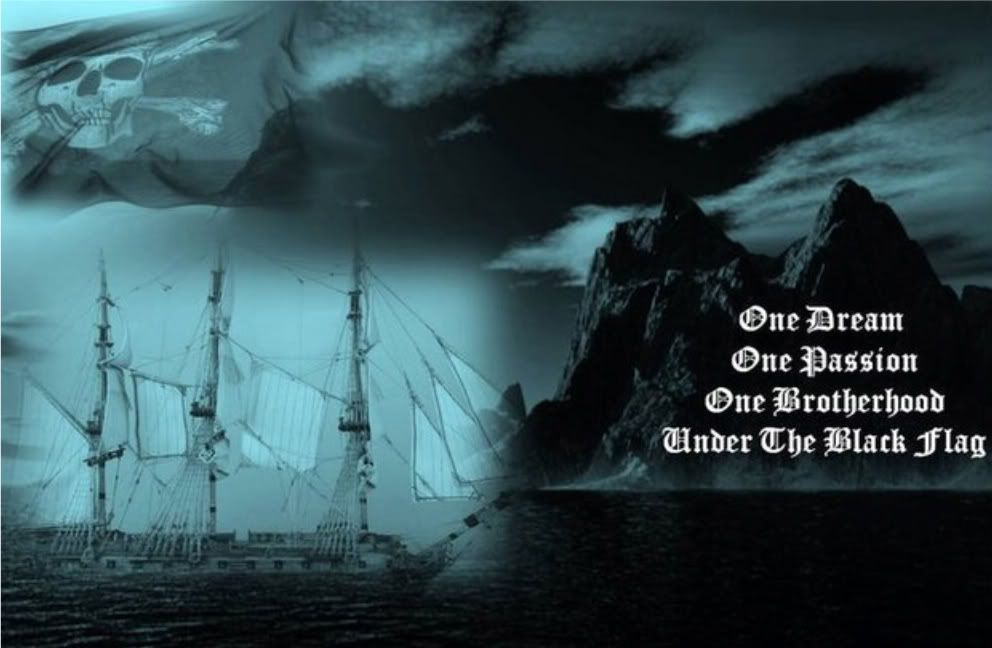Tools of the Trade: Stepping Out by Pauline
articles, Tools of the Trade: Stepping Out by Pauline 2:46 π.μ.As Angus Konstam so appropriately notes in his book The History of Pirates, what we believe we know about pirate clothing is almost entirely dictated by Hollywood. And Angus was writing before Disney jumped on the bandwagon (aside from Captain Hook, of course). Now every wanna be Jack Tar swaggers around in Captain Sparrow regalia, the quality of which varies widely. But not all pirates and privateers plied their trade in the Golden Age of free booting and pirates, it must be recalled, were sailors first and foremost.
In general, pirates, privateers and even the average foremast jack aboard a man-of-war wore clothes that were practical for their profession. The petticoat breeches and cotton shirt on the seaman above at far left were so common from the 17th to the first half of the 19th century that any landsman would know that guy for a sailor. Whether or not he was a pirate would be open to debate. Along with a neckcloth that could be tied around the head for hands-free sweat absorption and the ubiquitous bare feet that were the number one form of safety gear aboard ship, no further outfitting would be necessary in the tropical oceans that pirates favored. A woolen coat - known as a jack which evolved into the word jacket - might be added for runs up to England or Rhode Island.
There was one obvious exception to this general uniform. When a pirate went ashore to spend his loot, he would dress to impress if he could at all.
As we've discussed before, pirates were unusually lucky if they took a ship with a great deal of hard money aboard. Generally the prizes taken carried goods that had to be sold in order to make a profit but some items were almost as attractive to the buccaneers as specie. Alcohol, of course, had a hard time finding its way back to land. Jewelry was the next best thing to cash, gold, or silver because in most pirate haunts it could be spent with equal result. Gold and gemstone rings, necklaces, bracelets and so on were like pirate debit cards. And then there was clothing.
The cargo of a ship might include bolts of cloth but it might also include wardrobe items done up in part or in total that the pirates could commandeer. Most sailors were good with a needle - due to the frequency of work involving the mending and sewing of sails - so they would have no trouble putting together a fine coat, breeches or waistcoat from already cut pieces. Failing that, one or two passengers or the prize's captain might have a few fancy things in their sea chests. Add the typical tricorn hat with a feather and a ring on every finger (maybe a pair of boots or shoes if you could get them) and you were good to go.
The impetus for dressing flashy by land was two fold. First - and most importantly - it told the locals that you were a man of means. The tavern owners and working girls liked to cozy up to a guy with expensive clothes and lots of jewelry. The more the better because at least some of it would end up in their pockets. The second purpose was, quite literally, to piss off the establishment. Sumptuary laws in Europe frequently forbade the wearing of such diverse items as velvet, linen, pearls and leather by the common folk. And of course, carrying a weapon was unthinkable for the rabble. Pirates and privateers - some of the first citizens of real democracies since Rome hired an Emperor - were thumbing their nose at the governments that had, in many cases, turned them rogue in the first place.
Even in the heady post-revolution days of the early 1800s, privateers continued to flash their bling. Jean Laffite, arguably the last great pirate, was known as "The Gentleman Laffite" around New Orleans. The moniker not only distinguished him from his stout older brother Pierre, but spoke to the well tailored and expensive clothes that his profession gave him access to. In a time when Jefferson had banned all foreign goods from the US, Jean could appear at the Opera wearing French silk, Belgian lace and Spanish silver. Oh, and then there were the Italian perfumes and Swiss chocolates for the ladies. No wonder he was popular.
Don't be fooled by Hollywood imitations, Brethren. For the most part, our seafaring ancestors looked pretty scruffy and work-a-day. But when stepping out, a freebooter could really shine.
This article belong to Pauline
and we post it with her permission.













